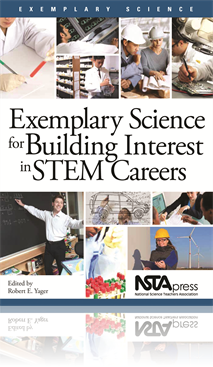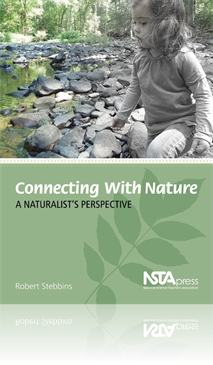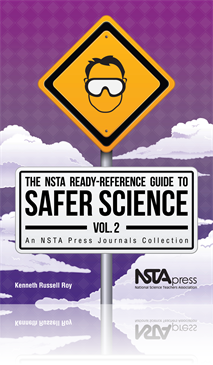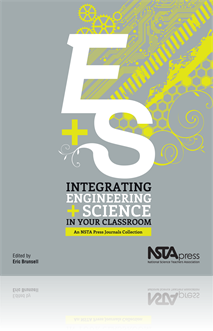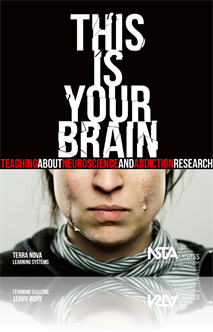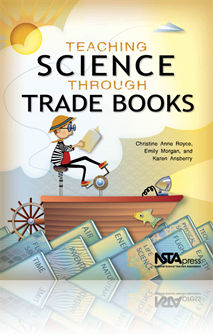All Book Chapters
Book Chapter
NSTA’s Efforts to Interest More K–12 Students in Pursuing STEM Careers
The National Science Teachers Association (NSTA) has inspired and coordinated science education in the United States for 64 years. As the largest professional organization in the world supporting excellence and innovation in science teaching and lear...
Book Chapter
Creating a Pipeline to STEM Careers Through Service-Learning: The AFT Program
The Academy for Future Teachers (AFT) is a STEM education and career recruitment program for Metro Atlanta high school students, hosted by Georgia State University in Atlanta, Georgia. This program was developed in response to the changing demographi...
Book Chapter
Preparing Students for Careers That Do Not Yet Exist
The Illinois Mathematics and Science Academy (IMSA), as a self-described “teaching and learning laboratory for imagination and inquiry,” has a history of pursuing innovations closely aligned with the vision and framework of the National Science E...
Book Chapter
Learning From Successful Cooperative Models
Since some schools lack even a modest representation of free-living animal and plant life, it is important that school districts consider giving high priority to the establishment of cooperative off-campus teaching and research areas for nature studi...
Book Chapter
Listening In on a Naturalist’s Experiences
Field trips that focus primarily on wild nature are one of the quickest ways to start the nature-bonding process. The chapter details a field trip the author conducted in which he used a hands-on approach to get students directly involved, as well as...
Book Chapter
Introduction To Safety In Science
This sample chapter provides an overview of general safety practices for the classroom. Topics discussed are Making Adjustments for Mobility- Impaired Students, Laboratory Safety: Welcome Aboard!, Yes, You Need a Chemical Hygiene Officer, NSTA’s Po...
Book Chapter
Get a Grip! A Middle School Engineering Challenge
Get a Grip! is a problem-based unit that places middle school students in the role of engineers who are challenged to design and construct prosthetic arms for amputees in a war-torn country. The students use common materials to build arms that accomp...
Book Chapter
Science Beyond the Laboratory: The Intriguing Career Paths of 14 Scientists and Engineers
A planetary scientist working on human rights issues? A bird brain researcher hosting a radio show? In this chapter, the authors present vignettes of real scientists who found themselves traveling unique career paths that put them in jobs they didn�...
Book Chapter
Changes Needed in Science Education for Attracting More Students to STEM Careers
Dr. Alberts’s editorials—Why I Became a Scientist; On Becoming a Scientist; Prioritizing Science Education; Reframing Science Standards; and An Education That Inspires—provide a “setting” for meeting Goal Four of the NSES, encouraging more ...
Book Chapter
Designed to Invent: Camp Invention, A 21st-Century Program
With the support of foundations and corporations, Invent Now works to provide programs for all children, including traditionally underrepresented groups such as girls, minorities, inner-city youth, and families who lack the financial resources to pay...
Book Chapter
Educating Students About Careers in Science: Why It Matters
In this chapter, the authors’ analyze why school science needs to attend more to educating students about opportunities for scientific careers. The arguments of this chapter are twofold: (1) School science education fails to recognize what it is ab...
Book Chapter
Ensuring The Ethical Conduct of Research
In this lesson, students explore the federal regulations and guidelines that have been established to help ensure the correct treatment of animals, such as the Animal Welfare Act (AWA). Students discuss acceptable and unacceptable research activities...
Book Chapter
Do you remember your amazement the first time you watched a Mexican jumping bean hop around in the palm of your hand? Investigating "jumping beans" is a unique way to get your students engaged in scientific inquiry. In this chapter, students invest...
Book Chapter
Depending on you location, you may get to experience different seasons–thus meaning your environment changes. Students can begin to make initial observations about an area and then follow this area through the changes that occur over the course of ...
Book Chapter
Invention assists students in understanding the relationships between the individual subjects of STEM education (science, technology, engineering, and mathematics). The playful nature of this chapter's trade books adds that additional spark of creati...


